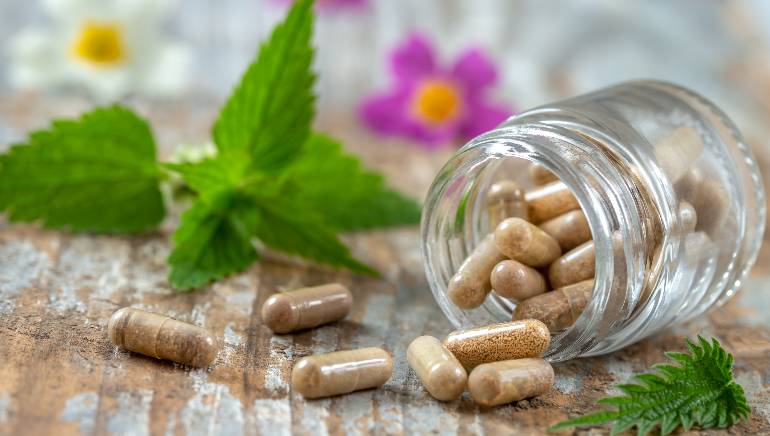Health
The Beta-glucans Clinical Trial Proved Its Ability To Burn Fat: Read Now!

With over one billion persons suffering from this chronic condition, obesity has pandemic proportions worldwide. Numerous studies have looked at the possibility of diets and dietary elements as a primary intervention in managing metabolic syndrome. In light of this, several dietary components, foods, and dietary practices that can regulate blood sugar, insulin, lipids, blood pressure, and food intake have been found.
Despite the lack of a standardized recommended diet for people with metabolic syndrome, there is mounting proof that consuming lots of fruits, vegetables, legumes, and whole grains is healthy. These foods’ low glycemic index and dietary fiber content have been linked to several advantages. But the properties of dietary fibers found in fruits, vegetables, legumes, and cereals are not well understood and range widely.
Overview On Beta-glucans Clinical Trial
The subject of this article is beta-glucan dietary fiber, which is easily found in oat and barley bran. Foods are supplemented with beta-glucan, a very cheap milling byproduct, in the hopes that it may improve health. Beta-glucans are most frequently found in the interior aleurone and subaleurone cell walls.

In order to ease the breakdown of the endosperm cell wall during germination, Beta-glucan endohydrolase controls the amount of beta-glucan that is present according to the environmental variables present during endosperm development. According to reports, barley and oats are the grains with the largest amounts of beta-glucan.
Major Sources for Beta-glucans
Data show that Canada is a significant producer of both barley and oats. Canada was second globally in oat production and fifth overall in barley production in 2007. It is simple to extract Beta glucan-rich fractions from cereal grains using either wet processing, proceeded by screening and solvent removals or dry milling, accompanied by screening and air classification techniques.
These methods produce or isolate that comprise 8–30% and 95% beta-glucans. A significant byproduct of the processing of oats is the bran, which can be produced by milling the aleurone layers and oat groat. Commercial oat bran includes 7–10% -glucan, which is in higher proportions in the bran than in the full oat groat. The aleurone and subaleurone cell walls also include carbohydrates, protein, and lipids, making the extraction of pure Beta glucan isolates difficult and expensive. Therefore, reasonably affordable oat and barley bran or flour fractions are commonly used, and pure beta-glucan isolates are frequently disregarded in the production of food products.
The goal is to demonstrate how soluble and fermentable fiber-glucan can be used to prevent and treat a variety of disorders that are associated with metabolic syndrome. Additionally, some findings examine whether -glucan’s impacts on health and illness differ from other soluble and fermentable dietary fibers.
What is this mysterious substance called beta-glucan?
Glucans are glucose polymers divided into two categories based on their interchain linkage: alpha or Beta linked. A diverse class of non-starch polysaccharides called beta-glucans comprises D-glucose monomers connected by beta-glycosidic linkages. Beta glucan’s macromolecular composition is influenced by its source and isolation process. The prokaryotic and eukaryotic Beta-(1,3)-D-glucan, linear and single-stranded, is the most basic glucan. Another straightforward structural type is made up primarily of linear Beta-(1,3;1,4)-D-glucans found in the nonlignified cell walls of cereal grains. Barley, oats, wheat, sorghum, and other cereals contain significant amounts of glucans in the aleurone layer, which are present in the endosperm cell walls.
Only the type 37 capsule of the streptococcus pneumonia bacteria contains the side branched beta-D-glucan. Different types of yeast, fungus, and algae have both beta-D-glucan and beta-branched beta-D-glucan. Beta-glucans are found in algae as a component of the cell membrane or as a storage polysaccharide. Beta and cyclic glucans were also recovered from a variety of bacteria.
These glucans serve as signaling molecules when a plant is infected and are crucial for interactions between plants and microbes. In addition to linkage type and branching variations, beta-glucans can differ in solubility, molecular weight, polymer charge, frequency and length of branching, degree of branching, and solution conformation (periodic helix, triple, or only one helix).
Dietary supplementation with beta-glucans
Bacteria, yeast, fungus, and cereal grains like oats and barley all contain glucose polysaccharides called beta-glucans. Increasing satiety and gastrointestinal transit time and slowing glucose absorption are all claimed benefits of beta-glucans, which are soluble dietary fibers. It has been demonstrated that eating beta-glucans from barley decreases calorie intake and appetite in people.
A number of variables, such as how quickly a carbohydrate exits the stomach and becomes available for absorption and how quickly released sugars from a meal bolus diffuse, affect how quickly a carbohydrate is digested. As a result, a key factor affecting the rate of glucose absorption and subsequent blood glucose levels is how quickly carbohydrates leave the food matrix and how well amylase can break down the carbohydrates.

Carbohydrates can either be quickly, slowly absorbed or even resistant, depending on how they are metabolized. Plant cell wall polysaccharides, gums, fructans, resistant maltodextrins, and hardened starches are examples of resistant carbohydrates.
These difficult-to-digest carbohydrates eventually reach the large intestine, which may be digested by the gut flora or produce prebiotic effects. Regarding beta glucan effectiveness, various research has looked into how the substance affects blood lipids, blood pressure, and insulin resistance, with weight loss as a byproduct. Aside from that, beta-glucans seem to be well tolerated. Increased flatulence is one of the undesirable effects that have been mentioned, but not altered stool periodicity, texture, or bloating.
Why has dietary fiber made from beta-glucans suddenly become popular?
The last two decades have increased interest in beta-glucan due to its functional and bioactive characteristics. The health advantages of beta-glucan have been the most thoroughly studied of all the fibers. In many nations, including Canada, the United States of America, Sweden, Finland, and the United Kingdom, it is legal to make health claims about foods containing beta-glucan. Furthermore, no negative effects have been documented on humans from eating a diet high in beta-glucan from oat or barley flour or their extracts.
Are beta-glucan supplements or medications?
Glucans are among a class of naturally occurring compounds that are biologically active and are receiving considerable attention for their potential as drugs as well as vital food supplements. Beta-glucans have been discovered to be the most powerful immunostimulants against both cancer and viral disorders. The molecule mass, solution conformation, backbone structure, branching intensity, and cell type that is being targeted all affect how immunologically potent -glucans are.
Over the past 40 years, much research has been done on the biological immunomodulatory effects of 1,3-beta-glucans in yeast, fungi, mushrooms, and seaweed. 1,3 beta glucans can improve the responsiveness and activity of immune cells in vitro, increasing both humoral and cellular immunity, according to research conducted on animals and people.
Studies conducted in vitro showed that beta-glucans could improve macrophage function and stimulate the antimicrobial activity of neutrophil and mononuclear cells.
In vivo investigations on the effects of different beta-glucans on the responses to pathogen infections in animals have found that exposure to beta-glucans increases microbial clearance and decreases mortality in lethally infected animals. The immunological role of beta-glucans was studied in a very small number of human research. Three clinical investigations showed that intravenous yeast Beta-D-glucan pretreatment of high-risk surgery patients reduced the incidence of infection, lowered the length of stay in the intensive care unit, and increased survival compared to a saline placebo infusion.
